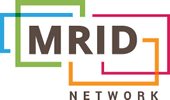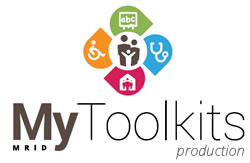Focus groups involve a number of individuals engaging in a free-flowing conversation about a topic of mutual interest as equal participants. They can be an effective tool for health professionals and consumers or carers working together to shape the delivery of services.
 As a Co-Design tool, focus groups can be used to both gather information and explore ideas, and create opportunities for mutual learning and development. Consumers and carers have the opportunity to share their ideas and knowledge, and be acknowledged as experts with lived experience of the condition in question.
As a Co-Design tool, focus groups can be used to both gather information and explore ideas, and create opportunities for mutual learning and development. Consumers and carers have the opportunity to share their ideas and knowledge, and be acknowledged as experts with lived experience of the condition in question.
Focus groups also provide clinicians with feedback from consumers as to what they believe is important and where energies and resources should be focused to better support them.
Through conversations between consumers or carers key questions emerge and priorities can be established. While health professionals may be able to contribute clinical advice, by listening, and encouraging discussion, they have the opportunity to gain insight into the common concerns of the group, their collective needs, and their expectations. This information can be used to guide the direction of existing services and future service development.
Running Effective Focus Groups
The experience of the Angelman Syndrome Association and the Angelman Syndrome Clinic has shown that ‘open space technology’ methodology is a very effective way of engaging participants and stimulating meaningful, valuable discussion in focus groups.
Co-design tools can be used to achieve a number of things at once:
- Bring people together as equals and partners.
- Share personal stories and compare experiences.
- Share information and advice.
- Listen to and learn from each other.
- Highlight issues of concern.
- Form questions about matters of interest.
- Provide feedback about what is and isn’t working in the ways care and support are being provided to consumers or carers.
- Identify priority consumer needs, wants and expectations.
- Identify gaps in available health and support services.
- Explore strategies for meeting priority needs, addressing issues of concern and improving service delivery.
This method involves participants managing the direction of their own discussion around a central theme. Multiple, round-table group discussions are staged concurrently in an open area (e.g. within a meeting or conference room) and, within defined parameters to ensure focus is maintained, each are allowed to flow loosely and organically without a prescribed agenda. Contemporary technologies are used to record discussions and to subsequently share findings from those discussions quickly and efficiently.
Focus groups require careful planning and coordination. In our experience, a number of factors contribute to ensuring focus groups are as rewarding and productive as possible:
- Organising focus groups in conjunction with other complementary events or activities (e.g. as part of a larger conference or followed by a social gathering).
- Scheduling focus groups early within a larger program of activities:
- This allows key themes or issues to be explored further after the focus group and for connections made within the group to be pursued further;
- This also avoids the fatigue that takes hold during the latter stages of any extended activity program.
- Surveying consumers and carers in advance to establish key matters for discussion, giving them a sense of ownership over the focus group process. This also allows professionals to be allocated to discussions of most relevance to their specialisation.
- Allowing consumers or carers the freedom to choose which group they participate in to ensure they are involved in a discussion of most interest and relevance to them.
- The most effective groups will include people with a range of experiences and backgrounds.
- The size of groups is important – usually 4-12 people is optimal.
- The majority of participants will be consumers or carers, with no more than two or three professionals per group – such that the discussion is dominated by consumers.
- Conducting focus groups over a meal helps to establish a friendly, collegial tone that will be most conducive to open discussion.
- All participants are asked to give their consent for the use of information gathered during the group discussion.
- Group conversation is led by a facilitator (usually a health professional). They aim to keep the discussion on topic and ensure that everyone is encouraged to participate.
- Discussion is allowed to range freely so the group determines its direction, rather than being provided with a fixed set of questions to answer.
- Wherever possible, discussion will include exploring ideas for how issues and challenges might best be addressed.
- Group discussions can last from one to two hours.
- Discussion is recorded and/or notes taken to ensure all information is retained.
- Feedback to participants following group discussions is provided, e.g. via a written summary in a newsletter or on a website.
- It is critical that concrete plans are made to act upon strategies developed and are communicated in this summary.
- Evaluation is conducted to establish whether participants were satisfied with the focus group process and the outcomes achieved.
Focus groups structured in this way create a supportive, inclusive framework for the sharing of experience and ideas between consumers, carers and professionals. When used regularly, focus groups can be an effective tool for monitoring client satisfaction and changing needs over time.
In practice, the experience of running the less successful focus groups served to define and cement the factors that do create the ideal conditions for making focus groups as effective as possible.
At the 2012 ASA NSW Branch seminar, focus groups were scheduled to take place over lunchtime. They were preceded by presentations on a range of subjects and followed by further presentations and a Q&A panel discussion. Families were surveyed ahead of the seminar about topics of pressing interest for them and four key themes were determined for focus group discussions: AS children under the age of 14, adolescents over the age of 14, the effect of AS on siblings and directions for AS research. Seminar participants, primarily parents, carers and siblings (aged over 16) of individuals with AS, were invited to choose which group they would join. Respite providers, community carers, allied health professionals and clinicians were directed to groups where they had relevant expertise, and a facilitator was assigned to each table. No group was larger than 10 people.
Focus group discussions were open and free-ranging. Digital recording devices were used to record them, and notes were taken. Carers, parents and siblings shared their stories and personal experiences, and gained enormously from sharing their concerns (and sometimes their fears) with other group members. A rich bank of information was gathered about the issues of primary concern for the group. In every case ideas were proposed for how those issues might be addressed. In practice, these then became recommendations for how the ASA and the ASC could look to refine and improve the services they offer to support families.
A team from the University of New South Wales have published a journal article based on our experience of ‘Open Space Technology’ focus groups. For further details use the link in the Read More section below.
- Open space technology, as a methodology for organising group meetings focused on a specific purpose or task, was developed by Harrison Owen in the 1980s. The method is described in detail in Owen, Harrison (2008), Open Space Technology: A User’s Guide (3rd ed.), Berrett-Koehler. A brief outline is also provided at Harrison Owen’s website.




